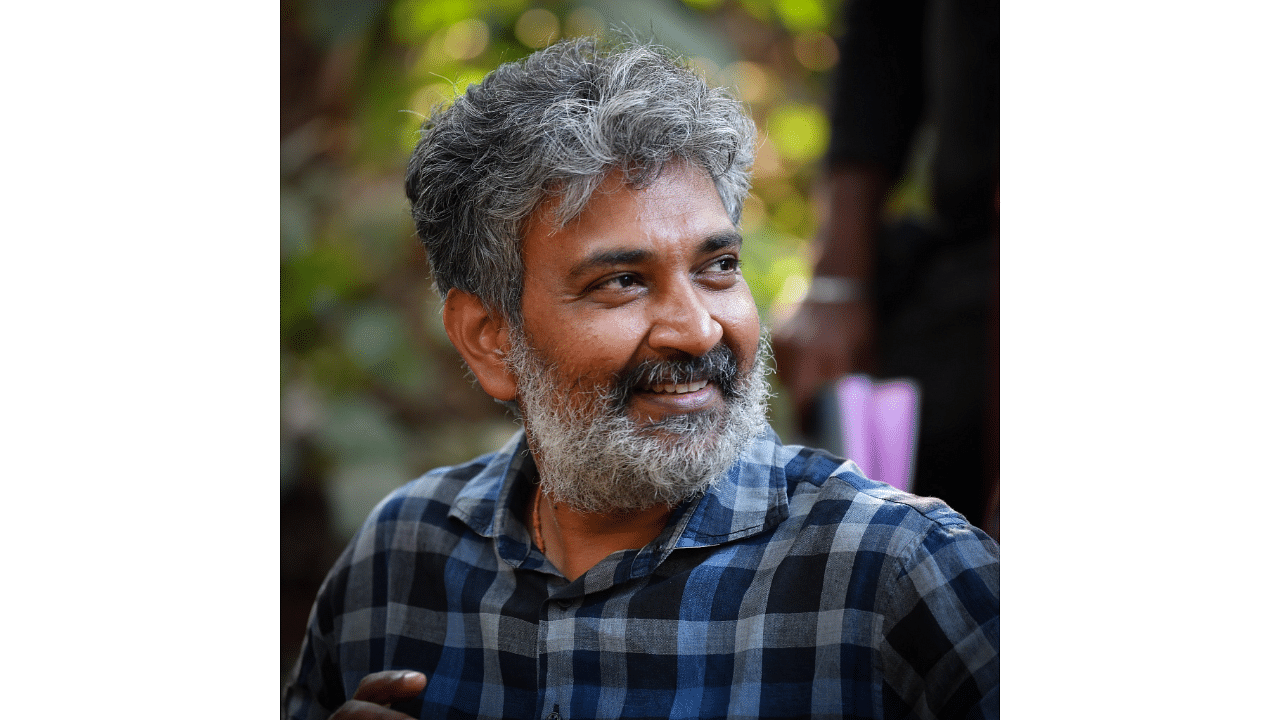
Ace filmmaker S S Rajamouli is gearing up for the release of his latest magnum opus Rise Roar Revolt (RRR), slated to hit the screens on March 25. The biggie, headlined by Jr NTR and Ram Charan, has created a created phenomenal buzz as it comes nearly five years after Baahubali 2, which helped him rewrite box office history.
Also read | 'Baahubali 2', 'Magadheera' and 'Eega': 5 S S Rajamouli movies to watch before 'RRR'
The ace storyteller, writer K V Vijayendra Prasad's son, began his career with a relatively small film Student No 1, which exceeded expectations at the box office. He subsequently consolidated his standing in the Telugu film industry with films such as Magadheera, Yamadonga, Vikramarkudu and Eega. With Rajamouli's latest magnum opus Rise Roar Revolt (RRR) set to hit the screens on March 25, here is a look at what makes him a source of inspiration for fans and the pride of Indian cinema.
Star maker
Rajamouli, unlike some of his peers, doesn't work with stars. He, on the contrary, makes them, The filmmaker helped Jr NTR, who made a forgettable debut with Ninnu Choodalani (2001), score his first hit when he teamed up with him for Student No 1. Tarak and 'Jakanna' further collaborated for movies Simadhri and Yamadongs, emerging as a bankable combination. He, similarly, gave Ram Charan, who had previously acted in Chirutha, a chance to experiment with his reel image when he cast him in the larger-than-life blockbuster Magadheera. Rajanmouli is also credited for introducing Kannada star Sudeep to the Telugu audience with Eega, which featured 'Deepanna' as the antagonist.
Relatable stories
One of the biggest reasons behind Rajamouli's perfect box office record is the fact that his work deals with universal themes. The Baahubali franchise and Vikramarkudu, for instance, dealt with revenge. Similarly, Magadheera and Eega added the concept of reincarnation, a subject previously explored in movies such as Madhumati and Karz, to this theme to make a solid impact. In a way, he was synonymous with pan-India movies even before the term became popular.
'Show' don't 'tell'
Rajamouli tries to tell stories through self-explanatory visuals rather than dialogues, which bears testimony to his craftmanship. Baahubali, for instance, featured a compelling sequence in which Prabhas' Shivudu/Shiva lifted a Shivalinga for his mother. It established him as strength personified even though not a lot was said. RRR is likely to follow a similar pattern.
Strong emotional core
It is no secret that a film, regardless of the genre or concept, needs a strong emotional core to reach its potential. Take the Fast saga for instance. It started off as an action-packed affair that catered to the younger crowd. but eventually evolved into a global phenomenon once the bonds between the characters took shape. This is exactly where Rajamoui's films strike gold. The dynamics between Prabhas and Sathyaraj add added depth to the brilliantly mounted Baahubali. In fact, the reason behind Katappa's decision to kill his beloved 'Baahu' was the saga's backbone. Similarly, the track involving the protagonist's daughter made it easier for one to take an interest in Vikramarkudu.
The gold standard
As strange as it may, Rajamouli raises the bar so high with his work that it isn't easy for his leading men to keep the momentum going with their subsequent work. Charan, for example, suffered a setback when Orange--his first movie after Magadheera, did not do well at the box office. Similarly, Khatarnak-- Ravi Teja's first release after Vikramarkudu-- proved to be a commercial failure.